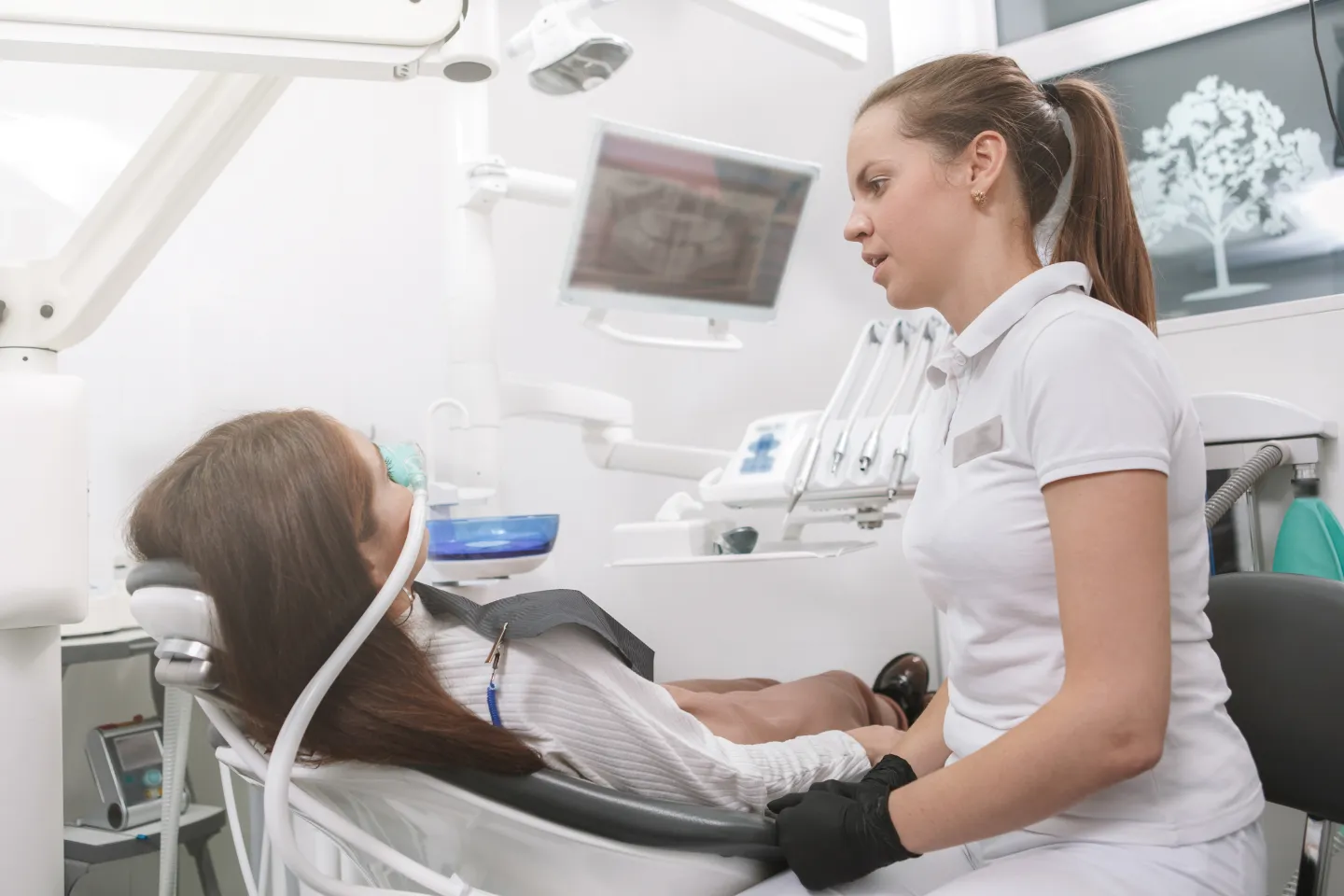Opening Hours
Monday: 7:00 a.m. - 2:30 p.m.
Tuesday: 7:00 a.m. - 2:30 p.m.
Wednesday: Closed
Thursday: 7:00 a.m.- 2:30 p.m.
Friday: 7:00 a.m. - 2:30 p.m.
Saturday: Closed
Sunday: Closed
Colorado Springs Sedation Dentistry

Sedation Dentistry has made visiting the dentist much less frightening and much more tolerable and comfortable for so many people. Sedation dentistry in Colorado Springs can alleviate dental phobia and dental anxiety, which would usually prevent people from seeking even the simplest of dental care. Believe it or not, dentists are very aware of the very real fear many patients have and are equipped and able to provide patients with several different sedation options. By doing this, everyone has access to and can seek regular dental care that is as pain-free and anxiety-free as possible.
There are three methods of sedation used in dentistry. Dr. Moore will help you decide which one is best for you based on his experience and skill, your level of anxiety, and the kind of procedure to be performed.
NITROUS OXIDE (“LAUGHING GAS”)
Nitrous oxide is more commonly known as “laughing gas.” This is a light form of sedation that is intended to relax the patient for a shorter or more non-invasive procedure, such as a dental cleaning, filling placement, or tooth extraction. This method can be used on both children and adults.
The laughing gas is administered via a mask placed over the patient’s mouth and nose. When the gas is released into the mask, the patient inhales it. Some patients will fall asleep with it. Others will just become extremely relaxed. Once the nitrous oxide has taken effect, the dentist will administer a local anaesthetic to the area being treated and start the treatment.
The advantage of nitrous oxide is that once the mask is removed, the effects of the gas wear off very quickly so that very little recovery time is needed, and because it is a gas, there are no side effects.
ORAL SEDATION
For adults, oral sedation may be an option. Oral sedation involves taking a drug cocktail. One pill is taken the night before surgery, and two are taken in the office, usually about an hour before the procedure.
You must discuss any medications you are taking and any medical allergies with your dentist. He or she needs to take this into consideration as well as the kind of dental treatment to be performed to be able to prescribe or recommend the right amount to take.
Some anti-anxiety medications last longer or wear off faster, so the type of medication needed in your particular case needs to be chosen carefully.
One of the disadvantages of an oral sedative is that, despite careful planning, the effects of the medication may wear off during the procedure, and the procedure can’t be stopped so that you can take more. The other disadvantage is that you will be unable to drive yourself home after the procedure and will need to make arrangements for someone to drive you home.
Oral sedation, like nitrous oxide, is also used in conjunction with local anesthetic, which is administered to the specific area being treated.
IV SEDATION (INTRAVENOUS SEDATION)
IV sedation (intravenous sedation) is the preferred sedation method for multiple extractions, bone grafting, dental implant placement, and root canals, basically, any procedure that will take a long time or involve more invasive action on the part of the dentist.
The sedative, along with pain medication, is given via a needle, usually placed in a vein on the back of the hand. Patients enter a “twilight sleep,” a light sleep where they can still respond to the dentist’s instructions, such as opening wider or closing slightly. The amount of sedation medication is carefully adjusted based on your height and weight, and if required, additional sedatives can be administered during the procedure. This safe and controlled approach explains How IV Sedation Makes Your Dental Visit Comfortable and Stress-Free, ensuring you remain relaxed and free from anxiety throughout your treatment.
Since the effects of the sedative generally wear off within 45 minutes to an hour, the IV will usually be removed so that the patient is just starting to rouse as the dentist is completing the procedure. The patient will need another 45 minutes to an hour to recover before being released home. The patient will not be allowed to drive for up to 18 hours following the procedure and will require someone to pick them up or be available to drive them home and stay with them as they recover.
With the various sedation dentistry options available, patients no longer have to fear going to the dentist or seeking treatment. Even those with extreme phobias, dental anxiety, or a sensitive gag reflex can now be managed effectively for everything from simple cleanings to regular check-ups. No longer does fear have to get in the way of achieving a healthy, great-looking smile, simply book an appointment today and experience stress-free dental care with the help of sedation dentistry.
Schedule Your Visit!
*First Name
*Last Name
Your Email
*Phone Number
*Preferred Appointment Date & Time
*Comments
(Requested time is not final until you receive confirmation from our office) I allow this website to store my submission so they can respond to my inquiry. By providing your phone number, you agree to receive informational text messages from Star Dental Institute.



